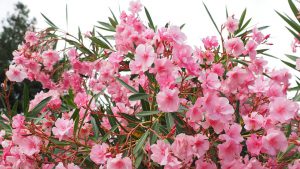Helping your garden plant to recovery from root bound

For those of us who are weekend warriors, we get so excited to work in our gardens connecting with nature as we give our gardens and landscapes the facelift which they need, how wonderful it is when we get the chance to head down to our favorite plant nursery to purchase a few plants which we can add to our gardens sprucing it up to bring that much need a flavor.
But as much as we are excited about making a few purchases we should be mindful of choosing plants that are healthy, to often there have been plants that were purchased without giving a thorough inspection of those plants which did not enhance the appearance of our gardens and landscapes but rather became an eyesore.
What went wrong, why did this plant which was just purchased took a downward turn? could it be the wrong soil type, what about giving it too much or too little water? this can leave the inexperience confused but what has been discovered is that many times garden plants which are brought comes with defects but having the right knowledge can help you avoid the frustration by helping you to make the right purchase from the get-go so you can feel that your purchase was the right investment.
Even though there are many factors to consider when purchasing garden plants one thing to consider and to stay clear of is purchasing plants that are root-bound. What is root-bound and how can I avoid purchasing plants of this type or once purchase how can I correct this problem so that my plant can grow healthy.
How to identify garden plants that are root bound
1. Remove the plant from the container and inspect the root ball thoroughly. If you notice while removing the plant from the container that the roots are growing or pocking through the drain holes this is a sign that that plant may be root-bound.
2. If the roots are growing in an upward position out of the container may also be a sign of root-bound.
3. When attempting to remove the plant from the container is difficult it may be a sign that that plant is root-bound.
4. If the roots are growing in a circular tight fashion is another indication of root-bound.
5. Once the plant is removed from the container if there are more roots than soil then this is a sure sign of a root-bound plant.
Problems with root bound- plants
Here are a few reasons to avoid root-bound plants
1. Root-bound plants will take a longer time to establish.
2. Less water uptake because the soil surrounding the roots is insufficient to absorb and retain water.
3. Less nutrient uptake because the soil surrounding the roots cannot absorb or hold fertilizer for the plant because the soil is insufficient.
4. Because a root-bound plant cannot take up sufficient water and fertilizer garden plants will be more susceptible to garden insect pests.
5. Can slow a plant’s growth.
6. As the roots grow in a circular pattern upwards can strangle the plant.
Rootbound plants and their care
If you have purchases plants that are root bound don’t despair all is not lost, putting these practices in place will help your root-bound plant to grow healthy.
How to fix a root-bound plant
If you suspect the plant which you purchased is root bound here is what to do.
1. Remove the plant from the container and inspect it thoroughly.
2. With a sharp knife or scissors being to cut away the roots from the bottom of the plant’s rootball.
3. As you cut away the roots from the bottom untangle the roots.
4. The plant should be placed in a larger container with good garden soil and water thoroughly.
Then benefits of correcting root-bound plants
1. Better water and fertilizer uptake.
2. Better anchorage to the soil.
3. A fuller plant with healthy leaves.
4. More flower bloom which is healthy.
5. Less prone to the attack of garden insect pests.
6. Healthy and natural form of plant structure.
7. Better quality fruits for container-grown plants.
Additional Information
Ensure when repotting container-grown plants that the container is twice the size f the rootball. This extra space will cause your plant to sit comfortably while growing healthy.
The container should have drain holes, at least 4-6 holes at the bottom of the container are sufficient.
Your container-grown plant should get adequate water especially after you would have done the pruning procedure.
As your container-grown plant shows signs that it has established by new leaves which begins to emerge after the pruning procedure use a fertilizer which is recommended for your garden plant and follow the direction on the label.
Keep an eye out for garden insect pests and treat them with an environmentally friendly pesticide. Before applying read and follow the manufacturer’s directions.
The final word
If you have purchased plants that are root bound all is not lost, there is still hope which can get your garden plant or plants on the right path to where they can grow healthy. Just follow the steps which were provided for you and in time your garden plants will bounce back with lush green growth and beautiful bloom.
About the author
Norman loves being in the garden, both at home and for his job....
he is 'Natures Little helper' being outdoors, growing his vegetables and flowers from an early age.
Now having spent over 22 years in the profession he want to give some of his knowledge to others...
his vast array of hints and tips you will find scattered over this site will help you no end growing plants in your garden.
